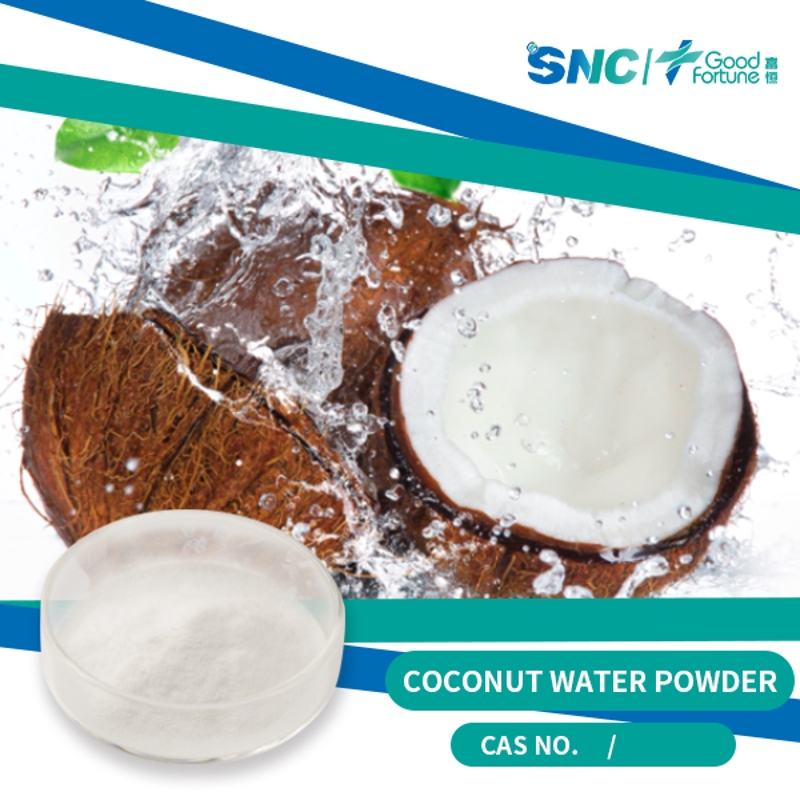-
Categories
-
Pharmaceutical Intermediates
-
Active Pharmaceutical Ingredients
-
Food Additives
- Industrial Coatings
- Agrochemicals
- Dyes and Pigments
- Surfactant
- Flavors and Fragrances
- Chemical Reagents
- Catalyst and Auxiliary
- Natural Products
- Inorganic Chemistry
-
Organic Chemistry
-
Biochemical Engineering
- Analytical Chemistry
-
Cosmetic Ingredient
- Water Treatment Chemical
-
Pharmaceutical Intermediates
Promotion
ECHEMI Mall
Wholesale
Weekly Price
Exhibition
News
-
Trade Service
Food Partners Reuters August 4, Shaanxi Province, market supervision and management bureau announced that the recent market supervision and management department of edible agricultural products , liquor , beverages , condiments , soy products , food processed products, meat products , dairy products , edible oils , oil and its products in 11 major categories of food batches of 123 samples were food safety supervision and sampling , in which the consumption of agricultural products, alcoholic beverages, condiments, soy five categories 6 batches of samples failed
.
.
Among the unqualified samples, there are 2 batches of edible agricultural products, namely: A batch of eggplant sold by Chen Xiaozhong Vegetable Wholesale and Distribution Department, Hantai District, Hanzhong City detected cadmium (calculated as Cd) and did not meet the national food safety standards; Shangluo City The detection of chlorpyrifos in a batch of leeks sold in Xiyangyang Jinfuwan Supermarket of Guoli Industry and Trade Co.
, Ltd.
did not meet the requirements of national food safety standards
.
, Ltd.
did not meet the requirements of national food safety standards
.
Cadmium is one of the most common heavy metal pollutants
.
The "National Food Safety Standard Limits of Contaminants in Foods" (GB 2762-2017) stipulates the limit value of cadmium in fresh vegetables (leaf vegetables, legumes, root and tuber vegetables, stem vegetables, day lily) It is 0.
05mg/kg
.
The reason for the excessive cadmium in eggplant may be the accumulation of cadmium in the environment during the planting process
.
Cadmium has chronic accumulative hazards to the human body.
Long-term intake of foods with excessive cadmium content may cause health hazards such as kidney and bone damage
.
.
The "National Food Safety Standard Limits of Contaminants in Foods" (GB 2762-2017) stipulates the limit value of cadmium in fresh vegetables (leaf vegetables, legumes, root and tuber vegetables, stem vegetables, day lily) It is 0.
05mg/kg
.
The reason for the excessive cadmium in eggplant may be the accumulation of cadmium in the environment during the planting process
.
Cadmium has chronic accumulative hazards to the human body.
Long-term intake of foods with excessive cadmium content may cause health hazards such as kidney and bone damage
.
Chlorpyrifos is an organophosphorus insecticide with contact, stomach toxicity and fumigation effects
.
According to the National Food Safety Standard Maximum Residue Limits of Pesticides in Foods (GB 2763-2019), the maximum residue limit of chlorpyrifos in chives is 0.
1 mg/kg
.
A small amount of pesticide residues will not cause acute human poisoning, but long-term consumption of foods with excessive pesticide residues may have a certain impact on human health
.
.
According to the National Food Safety Standard Maximum Residue Limits of Pesticides in Foods (GB 2763-2019), the maximum residue limit of chlorpyrifos in chives is 0.
1 mg/kg
.
A small amount of pesticide residues will not cause acute human poisoning, but long-term consumption of foods with excessive pesticide residues may have a certain impact on human health
.
In addition, a batch of unqualified beverages: Nominal 1 batch of purified drinking water produced by Nanzheng District Liyuan Water Development Co.
, Ltd.
(company location: Hanzhong City) was detected with Pseudomonas aeruginosa and did not comply with the national food safety standards.
Standard requirements
.
, Ltd.
(company location: Hanzhong City) was detected with Pseudomonas aeruginosa and did not comply with the national food safety standards.
Standard requirements
.
Pseudomonas aeruginosa is a conditional pathogen, widely distributed in water, air, normal human skin, respiratory tract and intestines, etc.
It is easy to survive in humid environments and has strong resistance to disinfectants, ultraviolet rays, etc.
, There is a health risk for people with weaker resistance
.
The National Food Safety Standard for Packaged Drinking Water (GB 19298-2014) stipulates that the standard value of Pseudomonas aeruginosa is n=5, c=0, m=0, and the unit is CFU/250mL
.
The cause of excessive Pseudomonas aeruginosa in barreled drinking water may be improper protection of the source water and pollution of the water body; some enterprises have inadequate environmental sanitation supervision, insufficient operation, and cross-contamination in the production process; long storage time in the circulation link.
The repeated use of water buckets increases the risk of secondary pollution
.
It is easy to survive in humid environments and has strong resistance to disinfectants, ultraviolet rays, etc.
, There is a health risk for people with weaker resistance
.
The National Food Safety Standard for Packaged Drinking Water (GB 19298-2014) stipulates that the standard value of Pseudomonas aeruginosa is n=5, c=0, m=0, and the unit is CFU/250mL
.
The cause of excessive Pseudomonas aeruginosa in barreled drinking water may be improper protection of the source water and pollution of the water body; some enterprises have inadequate environmental sanitation supervision, insufficient operation, and cross-contamination in the production process; long storage time in the circulation link.
The repeated use of water buckets increases the risk of secondary pollution
.
In addition, a batch of unqualified condiments is: a batch of Sanliang brand ginger vinaigrette (brewed sweet vinegar) produced by Jiangbei Vinegar Factory in Mian County, Shaanxi Province, has detected total acid (calculated as acetic acid) as non-compliant food Safety national standard regulations
.
.
The main component of vinegar, acetic acid and a small amount of other organic acids, is the total acid, which is one of the main indicators reflecting the quality of vinegar
.
The "National Food Safety Standard Vinegar" (GB 2719-2018) stipulates that the total acid (calculated as acetic acid) in sweet vinegar should be ≥2.
5g/100mL
.
The reason for the low content of total acid (calculated as acetic acid) is that the raw materials used by individual producers are of low quality; the second is the improper control of the koji-making fermentation process, which leads to insufficient fermentation; and the third is the excessive addition of water after the vinegar step.
The product can not reach the expected acidity
.
If the total acid is lower than the standard requirement, the acidity of the vinegar will be insufficient, which will affect the flavor of the vinegar
.
.
The "National Food Safety Standard Vinegar" (GB 2719-2018) stipulates that the total acid (calculated as acetic acid) in sweet vinegar should be ≥2.
5g/100mL
.
The reason for the low content of total acid (calculated as acetic acid) is that the raw materials used by individual producers are of low quality; the second is the improper control of the koji-making fermentation process, which leads to insufficient fermentation; and the third is the excessive addition of water after the vinegar step.
The product can not reach the expected acidity
.
If the total acid is lower than the standard requirement, the acidity of the vinegar will be insufficient, which will affect the flavor of the vinegar
.
The unqualified liquor is: 1 batch of Youqinzi brand papaya king liquor produced by Xile Life Supermarket sold by Baihe County Zhongfu Business Co.
, Ltd.
, Shaanxi Province Baihe County Qinyuan Food Co.
, Ltd.
The alcohol content does not meet the label.
Value requirements
.
, Ltd.
, Shaanxi Province Baihe County Qinyuan Food Co.
, Ltd.
The alcohol content does not meet the label.
Value requirements
.
Alcohol, also known as alcohol, refers to the number of milliliters of ethanol (alcohol) contained in 100 milliliters of wine at 20°C, that is, the percentage of volume (capacity)
.
Alcohol is a physical and chemical indicator of wine, and the alcohol content should meet the value indicated on the label ±1.
0%vol
.
The reasons for the unqualified may be the improper quality control of some production enterprises and the inadequate packaging that caused alcohol to volatilize; or the insufficient inspection capability of the enterprise caused the deviation of the inspection results; or the production enterprise may sell low-alcohol liquor as high-quality liquor in order to make a profit
.
.
Alcohol is a physical and chemical indicator of wine, and the alcohol content should meet the value indicated on the label ±1.
0%vol
.
The reasons for the unqualified may be the improper quality control of some production enterprises and the inadequate packaging that caused alcohol to volatilize; or the insufficient inspection capability of the enterprise caused the deviation of the inspection results; or the production enterprise may sell low-alcohol liquor as high-quality liquor in order to make a profit
.
In addition to the above-mentioned products, there is also a batch of unqualified soy products, which is a batch of Zhixiang Pavilion produced by the Xiafu Fuzhu Factory in Jian'an District, Xuchang City, sold by Baocheng Company of Shaanxi Zhongxin Xinbai Commercial Operation Management Co.
, Ltd.
The protein detected in Jiagraphic brand soybean oil skin does not meet the requirements of the enterprise standard of Q/XXT 0001S-2020 "Non-fermented soybean products"
.
, Ltd.
The protein detected in Jiagraphic brand soybean oil skin does not meet the requirements of the enterprise standard of Q/XXT 0001S-2020 "Non-fermented soybean products"
.
For the unqualified products found in the random inspection, the Shaanxi Provincial Market Supervision Administration has instructed the market supervision and management department in the place of the producer to immediately organize the disposal work, check the product flow, and take measures such as removing the unqualified products from the shelves to control the risk; Violations of laws and regulations shall be dealt with in accordance with the law
.
.
Announcement of Shaanxi Provincial Market Supervision Administration on the unqualified situation of 6 batches of food (No.
29 of 2021) unqualified sample information
29 of 2021) unqualified sample information
(Source: Shaanxi Provincial Market Supervision Administration )
Information related to unqualified products in food supervision sampling : Announcement of Shaanxi Provincial Market Supervision Administration on 6 batches of unqualified foods (No.
29, 2021)
29, 2021)
This article is edited by Foodmate.
com Food Information Center.
Unauthorized reprinting is prohibited.
If you need to reprint, please contact and get authorization to reprint, please contact news@foodmate.
net
.







